Visiting Nazaré and the big waves is an ideal travel detour in Portugal. The seaside city of Nazaré is small and attracts a fair amount of tourists, but the crowds are not overwhelming like other Portuguese destinations.
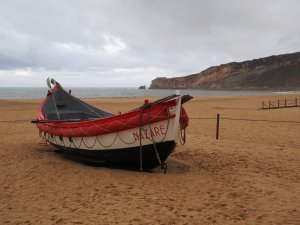
Most tourists in Portugal visit Lisbon and Porto. These are the two largest and most tourist-friendly cities. Nazaré is located in between the two cities, a little closer to Lisbon. But why is Nazaré worth taking the time to visit?
Contents
Why Travel to Nazaré?
Nazaré is the epicenter of the world’s big wave surfing scene. The waves in Nazaré are enormous and world famous. Crazy big wave surfers spend weeks/months here training and hoping to ride the biggest wave possible.
I’m not suggesting that anyone visiting Nazaré should go surfing. In fact, definitely do not attempt to do anything remotely related to surfing here. Unless you want to die.

Travelers in Portugal should take a detour to Nazaré to see the waves. There aren’t many places in the world where you can safely get up close and personal to 100-foot-tall crashing mountains of water. Surfers regularly ride waves more than 50 feet high, with the record big wave ride in Nazaré being more than 80 feet high.
The big wave surfing competition in Nazaré takes place in the Fall and Winter. This is when big wave surfers from all over the world descend upon Portugal in hopes of adding their names to the record books.
Other Reasons to Visit Nazaré
Watching big waves and crazy surfers can only last for so long. Eventually, the swells calm or the sun goes down. For one reason or another, you aren’t watching the sea all day. Luckily, there are other benefits to visiting Nazaré.
Break up the Lisbon/Porto Journey – Take a Detour
The trip from Lisbon to Porto (or vice-versa) takes anywhere from three to five hours, depending on which bus/train you take. Portugal is a pretty small country, so it’s a fairly easy journey from one city to the other.
If you want to break up the journey between Lisbon and Porto, Nazaré is a great alternative destination (versus Coimbra, for instance). Most tourists visit Portugal to see Lisbon and Porto. And maybe the Algarve. These are great areas, but Nazaré is an easy detour for travelers that want to see something a little different.
Small Town Portugal
Nazaré isn’t exactly a small town. With about 15,000 residents, it’s more of a small city. Either way, it’s a stark contrast to the major metropoli of Lisbon and Porto with millions of people.
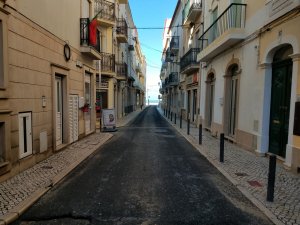
During peak sunny season, it will be fairly difficult to find that smaller town feel, but the small city is fairly quiet the rest of the year. Especially during Fall and Winter, provided there is no rain, Nazaré has a great small town vibe.
Get in Some Beach Time
Tourist numbers in Portugal swell during Summer. There are fantastic beaches all along the coast, from North to South. Nazaré has a nice, big beach that is ideal for a short beachside break when it’s warm and sunny.
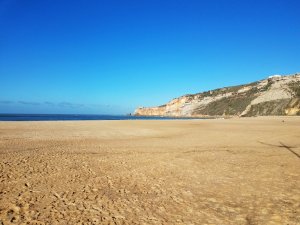
The town is much busier during the summer, but it’s hard to argue against sun and sand. If crowds really aren’t your thing, there are plenty of beaches right outside of Nazaré that won’t be nearly as busy as the one in town.
The Best Time to Visit Nazaré
Choosing whether or not to take a detour to Nazaré depends entirely on the season. If you want warm sunshine and sand, the window to visit is smaller. Summer is the best for beach time. Spring and Fall will likely have pleasant temperatures and sunny days, but it might not be warm enough for a dip in the sea.
I believe it is important to know that, during wintertime, weather in Nazaré can change quickly. The weather may be calm one moment, even sunny. Then, within a matter of minutes, it can change to extremely gusty winds and needling horizontal rain. Check the weather forecast. Prepare accordingly.
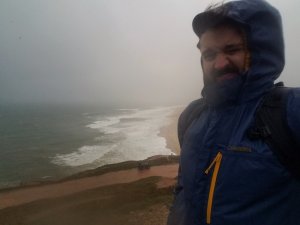
The coolest thing about Nazaré is the enormous waves. Don’t expect to see massive swells in the middle of Summer, though. The famous waves of Nazaré are a Winter feature. And the Nazaré big wave surf competition starts November 1st and runs until March 31.
Of course, there aren’t towering swells crashing down every day in Winter. Swells come and go. There will be days of small waves or even none at all. And then, when the swells roll in, there will be a few days of big, famous Nazaré waves and all the surfing that comes with them.
Just like weather, there are forecasters for waves. These reports are useful for surfers, fishermen and anyone working on or near the water. For tourists, use these resources to determine when the big waves will be in Nazaré. It requires a little flexibility in travel planning, but websites like this one are helpful in determining when the big waves will roll in.
Nazaré Transportation
Getting To Nazaré
The easiest way to reach Nazaré is by bus. The bus from Lisbon is said to take about 2 hours. It does not. In reality, it takes closer to three hours to reach Nazaré from Lisbon. From Porto, the trip should take about 3 hours, but is closer to 4 hours with stops in between. Either way, the trip to Nazaré from Lisbon/Porto is not bad, and the buses are comfortable.
There is no train station in Nazaré proper. The nearest stop is a few miles away at the small station of Valado. Forget about taking the train to Nazaré. It’s impractical. The train is more expensive, takes longer and does not even deposit travelers in the city.
Buses to Nazaré to/from Lisbon and Porto cost €10-15 each way.
Getting Around Nazaré
Transportation within Nazaré is negligible. There are no tricks. There’s no need to take a bus or hail a cab. Everything is nearby and easily accessible.
The lower part of the city, Praia, is flat and walkable. To traverse the city or walk from one end of the beach to the other takes no more than 15 minutes. The upper part of Nazaré, Sitio, is also fairly flat and easily walkable.
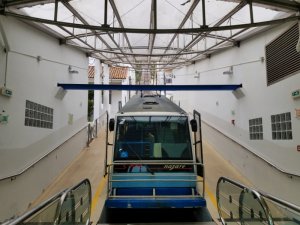
The only transportation concern in Nazaré is getting from the lower city to the upper city, from Praia to Sitio, and it’s easy. The historic Nazaré funicular runs roughly every 15 minutes and a round-trip ticket costs €2.90. The funicular ride is only a few minutes long. There is also a daunting set of stairs for travelers looking to burn extra calories.
Eating in Nazaré
Despite its seaside location, Nazaré isn’t known as a culinary destination. There is ample seafood available, most notably the unmissable stench of bacalhau drying on the beach, but nothing so good that it warrants a visit to Nazaré in its own right.
There are several restaurants located along the beach in Praia. Among these are ice cream shops, pizza, doner, Chinese and Indian food. There are Portuguese restaurants in the mix, too, but nothing that really stands out as exceptional. The local beachside food is also on the pricey side.
Hangry for More Portugal?
Check out these Portugal food guides:
Cheaper food in Nazaré is not necessarily local food. Much of it consists of fast food and foreign tastes. Most of the restaurants a few blocks inland from the beach are more affordable.
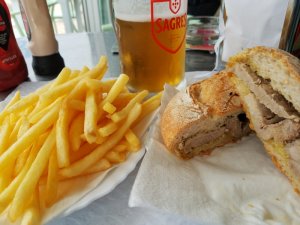
A Tasquinha is a good place for Portuguese fare. The menu is heavy on local seafood, and the staff is wonderful. Otherwise, nothing stood out to me in Nazaré. I ate more pizza and mediocre bifanas than seafood. Then again, I’m a stingy backpacker more often than not.
There are a few places in Sitio (upper Nazaré) where you can dine with a spectacular view.
Honestly, I had never even heard of Nazaré prior to my arrival in Portugal. As I was having dinner with some local friends in Lisbon, we were discussing my onward travel. The giant waves of Nazaré kept coming up. After seeing a few photos and videos of the world’s largest surfing waves in Nazaré, I was convinced.
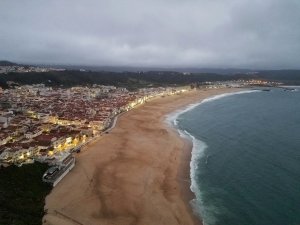
The beaches, big waves, small town vibe and perfect seaside location between Lisbon and Porto make Nazaré an easy choice for a unique detour when traveling in Portugal.
Leave a Reply
You must be logged in to post a comment.